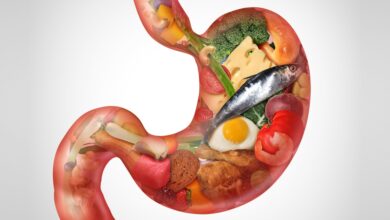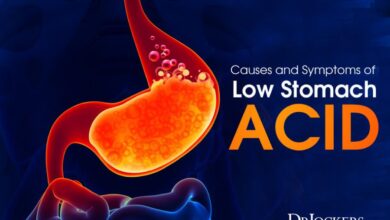
Have you ever wondered how long it takes for the food to digest in your body? Digestion is a complex process that involves multiple organs working together to break down food into nutrients that can be absorbed by the body. From the moment you take a bite of food to the time it is fully digested and eliminated from your body, there are several stages involved in the process. In this blog post, we will explore each step of the digestion process and answer the question, how long does it take for the Food to Digest?
The First Stop – Mouth and Esophagus
The journey of digestion begins the moment food touches your lips. Chewing breaks down food into manageable pieces while saliva, rich in enzymes, starts the chemical breakdown of carbohydrates. This preparation is crucial for making the food easier to swallow and for initiating the digestive process.
- The act of swallowing then propels the food into the esophagus, a muscular tube that connects the mouth to the stomach. Here, a series of coordinated muscle contractions, known as peristalsis, guides the food efficiently towards the stomach. This initial phase, encompassing both mechanical and chemical breakdown in the mouth and the smooth, muscular actions of the esophagus, is relatively swift, taking mere seconds to a minute to complete.
- Within this brief period, the body showcases a remarkable efficiency, turning solid food into a form that can be further processed in the stomach. This phase is more than just a simple transit; it’s where digestion officially kicks off, with enzymes in saliva beginning the complex process of breaking down food molecules. The preparation done in the mouth ensures that by the time food reaches the stomach, it’s ready for the next intense phase of digestion. This segment of the journey, although quick, is fundamental, setting the stage for the more elaborate processes that follow in the stomach and beyond.
The Stomach’s Role in Digestion
When food enters the stomach, it encounters a highly acidic environment, where gastric acids and digestive enzymes go to work. This acidic mixture is vital for not only further breaking down food particles but also for killing potentially harmful bacteria that may have been ingested. The stomach’s muscular walls play a critical role in digestion by rhythmically contracting to churn the food, blending it with digestive juices to produce a mixture known as chyme. This churning action ensures that the food comes into maximum contact with stomach acids and enzymes, facilitating the breakdown of complex proteins into simpler forms that the body can more easily absorb.
- During this phase, the stomach also serves as a regulator, meticulously controlling the rate at which this semi-digested food is released into the small intestine for further digestion and nutrient absorption. The pyloric sphincter, a valve at the stomach’s exit, carefully manages this transfer, ensuring that only small amounts of chyme are released at a time, allowing the small intestine to effectively process and absorb nutrients.
- Digestion within the stomach is a robust process that generally spans 2 to 4 hours, depending on the composition of the meal. Meals rich in proteins and fats typically require more time to digest, as they are more complex and take longer for the stomach to break down. The exact time can also be influenced by the volume of food consumed and the individual’s digestive health. During this period, the stomach’s role is indispensable in breaking down food into a form that can be utilized by the body, highlighting its importance in the overall digestive process.
From Stomach to Small Intestine
Once the stomach has played its pivotal role in breaking down the food through the action of stomach acids and enzymes, the partially digested contents, now known as chyme, make their way to the small intestine. This transition is a critical juncture in the digestive journey, where the bulk of nutrient absorption occurs. The chyme’s entry into the small intestine is regulated by the pyloric sphincter, ensuring a controlled release to optimize digestion and absorption.
- In the small intestine, an intricate process unfolds as the chyme is met with a barrage of enzymes from the pancreas and bile from the liver, which are essential for the breakdown of fats, proteins, and carbohydrates. This section of the digestive system is remarkably designed for efficiency, with villi and microvilli—tiny, hair-like structures that line the intestinal wall—vastly increasing the surface area for nutrient absorption.
- The digestion and absorption phase within the small intestine is an extensive process, typically lasting between 4 to 6 hours. However, this duration can vary based on the composition of the meal and the body’s digestive efficiency at that moment. The small intestine’s role is critical; it is here that the body retrieves the necessary nutrients from the food, facilitating their entry into the bloodstream and ensuring that the body receives the energy and building blocks it needs to function optimally. This seamless transition and processing underscore the small intestine’s indispensable role in the digestive process, bridging the gap between the mechanical breakdown in the stomach and the final absorption of nutrients.
The Role of the Small Intestine in Nutrient Absorption
The small intestine plays a pivotal role in the digestive system, acting as the primary site where the crucial absorption of nutrients into the bloodstream occurs. As chyme enters this part of the digestive tract from the stomach, it brings with it partially digested food that contains a complex mixture of carbohydrates, proteins, fats, vitamins, and minerals. Here, the body’s digestive machinery kicks into high gear. The pancreas contributes a suite of enzymes that further break down the nutrients into more absorbable forms. Simultaneously, bile from the liver aids in the emulsification of fats, ensuring that fat-soluble vitamins and essential fatty acids are readily absorb.
- The unique structure of the small intestine, with its extensive network of villi and microvilli, exponentially increases the surface area for nutrient absorption. This intricate lining is not merely a passive barrier but an active participant in digestion. It hosts a multitude of transport mechanisms that meticulously transfer nutrients from the digestive lumen into the blood. Carbohydrates are broke down into simple sugars like glucose and absorb alongside amino acids, the building blocks of proteins. And lipids, which are process into a form that the lymphatic system can handle.
- This stage is essential for the sustenance of life, providing the body with energy and the materials. Needed for growth, repair, and maintenance of tissues. The efficiency of nutrient absorption here is influenced by various factors, including the composition of the diet, the health of the digestive system, and the presence of adequate digestive enzymes and bile. Through this highly coordinated process, the small intestine ensures that the body receives the vital nutrients it needs to function optimally, marking its significance in the journey of digestion.
The Final Leg – Large Intestine to Excretion
As the digestive journey nears its end, the waste material from the small intestine moves into the large intestine, also known as the colon. Here, the primary focus shifts from nutrient absorption to the recovery of water and electrolytes, a crucial step in maintaining the body’s hydration and mineral balance. As the liquid content of the waste is reduce, what remains is gradually form into stool. This process is facilitate by the colon’s muscular movements, which help to compact the waste and propel it towards the rectum.
- In the rectum, stool is store until the body signals that it is time for it. To be expel, marking the final act of digestion. This stage, from the entrance of waste into the large intestine to its eventual excretion. Is notably variable in duration, generally taking between 12 to 48 hours. This variability is influence by numerous factors, including the composition of one’s diet. Particularly the intake of fiber, which can significantly affect the speed and ease of waste movement through the colon.
- During this phase, the large intestine also serves as a habitat for a complex community of bacteria. That play a role in the digestive process, further breaking down some. The materials that have eluded earlier stages of digestion. These microbial inhabitants are crucial not only for digestion. But also for the overall health of the digestive system and the body as a whole. Thus, the large intestine’s functions extend beyond mere waste processing, contributing to water conservation. Nutrient synthesis, and maintaining intestinal health, before concluding the digestive process with waste excretion.
Factors Influencing Digestion Time
The duration of the digestive process is not uniform for everyone; it’s influence by a variety of factors. Each playing a unique role in determining how efficiently your body can convert food into energy and waste. One of the primary determinants is the nature of the food itself. Meals that are rich in complex carbohydrates, fibers, fats, and proteins require. A more extensive breakdown, thereby lengthening the digestive timeframe. On the other hand, foods composed mainly of simple carbohydrates tend to pass through the digestive system more swiftly.
- Your metabolic rate, or the speed at which your body processes calories, also significantly impacts digestion time. Individuals with a higher metabolism may find their food moves quicker through the digestive tract. Additionally, the overall health of your gut, including the balance of microbiota residing in your intestines, plays a crucial role. A healthy, balanced gut microbiome can aid in more efficient food breakdown and nutrient absorption.
- Hydration levels are another key factor; adequate water intake facilitates smoother digestion and easier passage of waste through the intestines. Conversely, dehydration can slow down the digestive process, leading to constipation and other issues.
- External influences such as stress levels, physical activity, and the use of certain. Medications or supplements can further modify how long it takes for food to digest. Stress, for instance, can slow down or speed up the gastrointestinal system, affecting digestion duration. Thus, understanding these variables can help in managing and optimizing your digestive health.
Understanding Digestive Disorders
Digestive disorders can have a significant impact on the efficiency and comfort of the digestive process. Conditions such as gastroesophageal reflux disease (GERD), characterized by frequent acid reflux. Irritable bowel syndrome (IBS), which can manifest as alternating episodes of diarrhea and constipation. And inflammatory bowel disease (IBD), including Crohn’s disease and ulcerative colitis. Can disrupt the normal functioning of the digestive system. These disorders may lead to a range of symptoms, including abdominal pain, bloating, gas, and changes in bowel habits.
The underlying causes of these conditions can vary, encompassing factors such as genetic predisposition. Imbalances in gut microbiota, immune system responses, and even lifestyle choices. Effective management often requires a comprehensive approach, including medical intervention, dietary adjustments, and in some cases, Lifestyle modifications. If you’re dealing with symptoms suggestive of a digestive disorder, it’s crucial to seek. Professional guidance to identify the specific issue and develop a tailored treatment plan. This proactive approach is essential for maintaining both digestive health and overall well-being.
Conclusion
In summary, the journey food undertakes through our digestive system is intricate and varies significantly from person to person. The complex orchestration of organs and processes involved in digestion highlights. The body’s remarkable ability to derive essential nutrients from what we consume. Factors such as diet composition, individual metabolism, gut health, hydration, lifestyle choices. And even emotional stress can all influence the efficiency and duration of digestion. Recognizing these variables and their impact on our digestive well-being enables us to adopt healthier eating habits. Manage stress effectively, and make lifestyle adjustments that promote optimal digestion. It’s important to be attentive to our body’s signals and to address. Any digestive discomfort with appropriate dietary changes and professional consultation. By doing so, we can support the crucial process of digestion. Ensuring our body receives the nourishment it needs to thrive.





